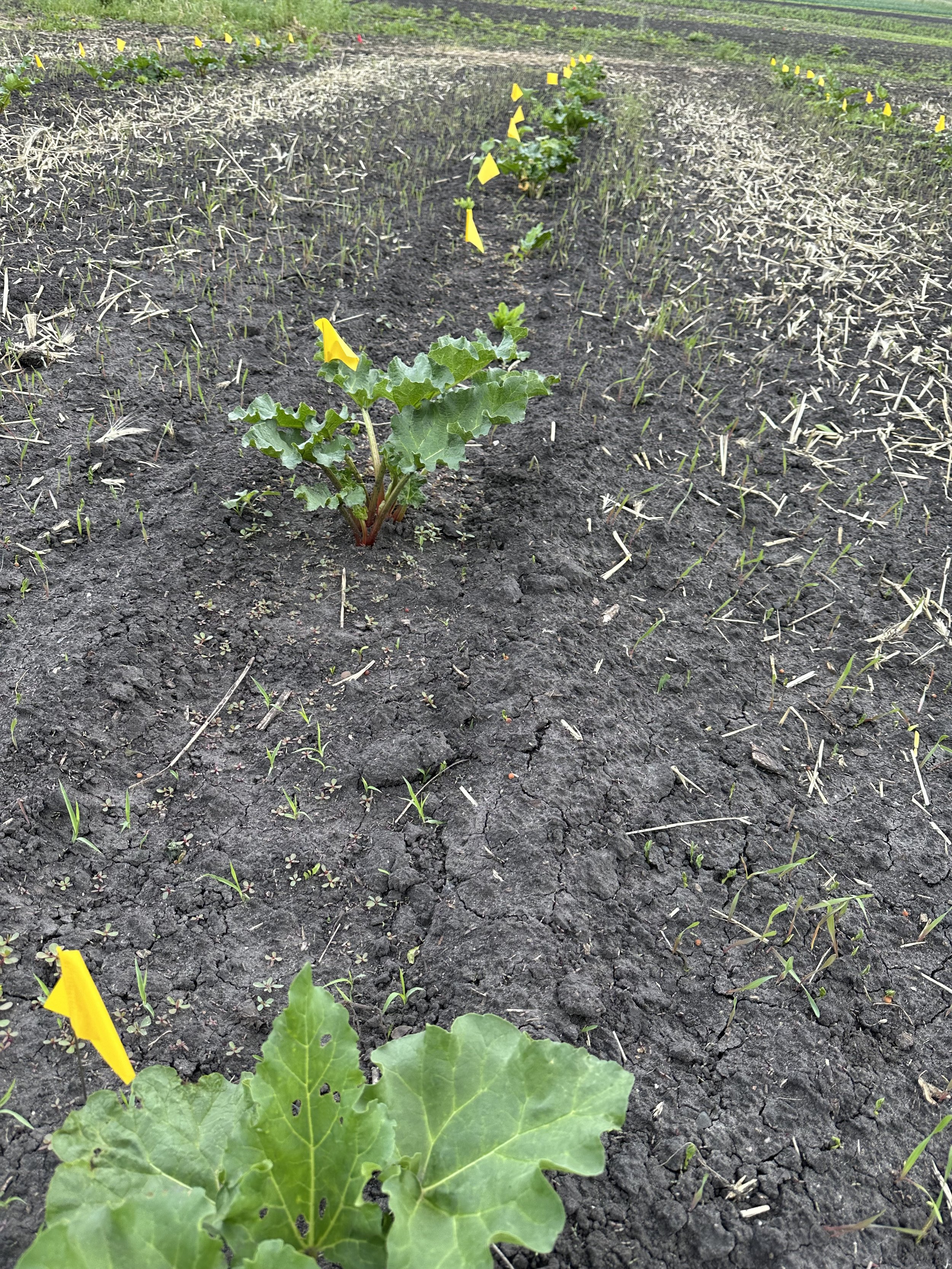Perennial Crop Spotlight: Rhubarb
Here we are at the end of rhubarb season and I’d love to send it a fond farewell and talk about the importance of perennial crops on our farm. Rhubarb season lasts from early to mid May through early to mid June in most cases. The rhubarb yield was on the lower side this year. I think that’s attributable to both the intense rainfall we had in the first half of last season and the lack of rainfall we had in the second half. Many perennials “bank” energy in their roots that they use the following season. Without this banked energy the yield can be lower.
Last year we attempted to expand our rhubarb patch from about 4 plants to around 40 plants. We bought the crowns, transplanted them in mid-May and then they were obliterated by torrential rain. We only had about 3 plants survive of the 35 or so we planted. A major disappointment and a waste of money, labor, and energy. We thought we’d try again this year and here’s what we’ve got so far:
Each yellow flag marks a rhubarb plant. Almost all of them made it!
Our rhubarb planting was a big success this year! We have near 100% of the crowns we transplanted emerge and if the weather is halfway decent this season we’ll be well on our way to have an abundant rhubarb supply! You may notice some spindly grassy looking stuff in between our rhubarb rows. That’s a winter rye cover crop we planted to help keep the weeds down while the rhubarb gets established.
Why are perennial crops important?
Before we get into why perennial crops are important let’s go ahead and define what a perennial crop is. Perennial crops are crops that come back year after year without having to replant each spring. Some perennial crops you may already be familiar with are asparagus, raspberries, and strawberries.
There are two big reasons perennial crops are important. First, because they come back year after year we end up not having to till or disturb the soil around them. This helps to improve our overall soil health and especially in the areas where our perennial crops reside.
The second reason is that we have some obtuse areas on the farm. That is, spaces on the farm where the beds and rows aren’t uniform length and where we have other farm infrastructure set up. It’s difficult to get our tractor and many of our tools in these spaces and it’s difficult to approximate harvests with non-uniform areas. That’s where perennial crops can come in. We can plant perennials in these obtuse spaces to make use of these spaces and not have to deal with the headaches mentioned previously.
The space along the north end of our tunnels is obtuse and perfect for perennials!


